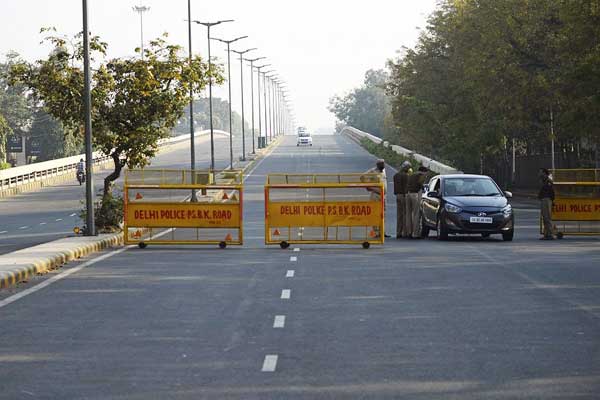
Coronavirus couldn’t have hit the world at worse time than this. When there was a global economic slowdown and most major economies of the world including India were struggling, emerged the worst pandemic of the century in form of Covid-19, popularly referred as Coronavirus.
Leaders like British Premier Boris Johnson and POTUS Trump would not be spared by their people and international critics for casual handling of the crisis in their respective countries.
At the same time, the leadership of Singapore Premier Lee Loong and South Korean President Moon will be hailed globally for instituting timely measures to prevent spread of the deadly virus in their respective countries. The leadership in such hours of crisis matters a lot. India is fortunate to have a dedicated and visionary leader like Narendra Modi at the helms.
While the South Korean Model of aggressive and maximum testing has proved successful, the world is also studying and appreciating the Indian model wherein a densely and overpopulated nation like India with very limited resources and a not very advanced health infra structure has been able to control the exponential spread of the pandemic so far in comparison to the spread ratio in advanced countries like the US and West European nations.
The Indian Model is based on the concept of Social Distancing to prevent the spread and break the chain of spread through self-isolation especially for a 14-day period for those with a history of recent foreign travel.
Social distancing in a society like ours is not easy to practice. The privileged and the elite class could maintain social distance because of the facilities they enjoyed but imagine the condition of the jhuggi and slum dwellers or migrant labour who often shared one room to save rent.
As the days passed, they gradually started losing their jobs and wages as well since people stopped their entries to their homes. Once the WHO announced the crisis as a pandemic on 13 March and death tally started increasing exponentially in China and certain West European nations particularly Italy, the demand for sterner measures at home began to grow. But the government maintained that the Social-Distancing was the best option and powers were delegated under the Disaster Management Act to allow the District Administrators to enforce the same in their respective districts with close monitoring by an Apex body appointed under the chairmanship of the Union Health Minister.
Subsequently, the Prime Minister announced a nation-wide 21 day lockdown beginning midnight 24 March. Ministry of Home Affairs issued extensive guide lines to maintain social distancing. Soon, the entire railway and air network was suspended followed by ban on district move via road transport as well.
The credit goes to the vast majority of Indian populace which strictly followed the advisories issued by the government and responded unitedly to various calls given by the nation’s Prime Minister. The nation has not only accepted the leadership of Narendra Modi but is standing solidly behind him to ensure that the nation wins its fight against Corona.
The collective will of the people is yielding results. However, two incidents did create a challenge for the leadership but both were controlled. The first was the outpour of migrant labour on roads with a view to tread long distances to reach their homes. A problem, which should have been anticipated.
The Prime Ministers had held a video conference with the Chief Ministers (supported by their respective Cabinet and State Administration Officials), and later with all media heads; followed by the Cabinet Secretary having a separate video conference with all State/UT Chief Secretaries, but none foresaw such a migration. It is an abject failure of those responsible to execute the administrative measures. It is another matter that everyone acted swiftly for damage control.The fear of these hordes reaching the rural areas which already lacked health infrastructure forced the government to adopt strict methods to stop the exodus.
The mechanisms were soon set in place and within 72 hrs, the problem was contained. The other was the unfortunate and irresponsible TablighiJamat episode. It is not the time now for blame game because the crisis demands unified national effort. However, a detailed investigation at appropriate time would definitely identify the defaulters and if it was deliberate.But for these two incidents, things would have been entirely different.
None the less even now India is being watched globally and the data points towards a successful India model.
Overruling the naysayers, Modi has said, “Jaanhai to Jahan hai” (Health is Wealth). He did not get carried away by those who were scaring him of the impending economic recession. Not that he or his government is not worried. He is simultaneously addressing the issue while giving overriding preference to human lives.
The PM has come out with brilliant ideas both economically and socially to ensure that the chain of coronavirus is broken and the nation is spared of the horror of the pandemic entering the third stage. Various economic measures to cater for the unorganised and organised sectors have been announced by the government.
The critics may term it too late, too less but the government’s response is dynamic with day to day monitoring and long term planning. On the social front Modi wants the nation to fight the crisis together. Ensuring cohesion, avoiding boredom and stress due to prolonged lockdown, keeping the fear away and appreciating the Corona Warriors, has been the major focus of the Prime Minister to ensure that the nation’s resolve does not dither.
A focussed fund to supplement the monetary requirements through voluntary donation by the citizens has also been launched called PM CARES Fund (Prime Minister Citizen Assistance and Relief in Emergency Situations Fund). Suspension of MPLAD fund for two years and voluntary cut in salaries by 30% of all MPs are the two other major decisions which can be also viewed as “example-setting” and “trend-setting.”
As we enter the last week of the lockdown things though under control are not looking very positive. Many state administrations have instituted the stricter lockdown measures like‘total sealing’ in the designated Red Zones based on the hotspots identified by the Ministry of Health and Family Welfare to prevent rapid spread of the disease.
People are not permitted to step out of their houses while their essential needs are being met through door to door supply. The government has also used this period to step up the health infrastructure and build stocks of Personal Protective Equipment, Masks and Sanitizers. Specific Covid hospitals have been designated, testing facilities increased, railway coaches modified, retired doctors and para-medicals recalled to meet the worst case scenario.
The effort, however, is to avoid reaching that stage through stricter lockdown measures and possible extension of the lockdown period.
While our confirmed cases are nearing six thousand, active cases stand around 5200. While the rise in the number of cases was gradual during the period 25 March-01 April, there has been sudden spike from thereon mainly due to two reasons more testing and Tablighi factor.
The percentage of daily cases increased after the lockdown spiked till 1st April and has shown decline thereafter but the curve has yet to be flattened. This is essential so as to ensure the medical care resources are overwhelmed by huge numbers too suddenly.
There are some views on “herd immunisation”. No head of a government can ever take a chance with the lives of his countrymen with such vague hypothesis and extreme views – best be discarded.
Since, the graph has been oscillating we cannot afford to take the risk of easing control which may negate all the good work done so far. Many Chief Ministers have approached the PM to extend the lockdown.
The government is faced with many dilemmas. First and foremost is the harvesting season which has already been delayed followed by the sowing of Kharif crop because it would not only affect farmers’ income but also nation’s food grain reserve stocks.
Second is the impact on economy. Third is growing unemployment and last but not the least is the concern about more than 20% of our population that lives below the poverty line and more may be pushed below that line due to ban on movement, the worst affected being the unorganised sector.
The PM during his tele conference with the leaders of the opposition parties has clearly laid down his priority. He has likened the situation to ‘social emergency.’ He has also said in no uncertain words that the priority of his government is to “save each and every life.” He has given adequate hints of inability to lift the lockdown in one go.
As far as economic challenges are concerned he has reiterated the commitment of his government to “overcome all challenges.” The final decision is likely to be taken on April 11, when PM will consult the state CMs and Administrators of UTs.
While the PM has admitted that India has been among the few nations to control the pace of spread, he has also sounded caution by stating that “situation keeps changing continuously and one needs to maintain vigil.”
In such hour of crisis the opposition has a major role to play by keeping the government on its toes to ensure that it does not lose the focus. Unfortunately, Sonia led Congress is doing exactly the opposite. Not able to digest the growing popularity of the present dispensation amidst the crisis, the opposition parties has resorted to oppose every action of the government without any constructive suggestions.
Starting with the timing of the lockdown, handling of migrant labour, economic package, social measures like clapping and 9 pm candle lighting and PM Cares Fund, the main opposition leaders have been constantly criticising Modi just for the sake of criticism without suggesting any constructive and workable alternatives. Jeering rather than opposing appears to be the motive of various statements issued by these leaders and seconded by their followers.
We as the responsible citizens and stakeholders in the unified fight against Corona under the leadership of PM Modi need to brace up our selves for another lockdown. The modalities of extending the lockdown can best be left to the domain experts. We have to prepare ourselves mentally and physically for stricter lockdown measures.
The businessmen need to understand the need to save lives viz a viz loss of revenue and gladly support the decision of the PM by reminding themselves, “Jaan Hai to Jahaan Hai.” The salaried class including pensioners need to be prepared for a temporary salary cut to meet the needs of burgeoning expenditure to contain the pandemic.
We all have to practice what we were taught as children or what we now teach to our children, “Sharing is Caring.” Apart from cutting down on our own needs we will have to take care of the underprivileged members in our neighbourhood and local communities through sharing with them not only resources but love and compassion as well.
Even at the expense of sounding alarmist one would not hesitate to warn of a “Social War” between the ‘Haves’ and ‘Have Nots’ if we do not show that compassion because for how long such situation is going to prevail is difficult to predict at this stage.





India needs to hand out Chloroquine and Azithromycin. to every citizen who is exposing themselves to the virus if going to work Until vaccine is found. All Indians have to live under this new normal. Masks must be worn until vaccine is found.
The virus has no obligation to go quietly into the night. It could burn through communities around the world for months, even years. It may go dormant in areas, then reappear. The devastating 1918 influenza pandemic behaved like that, circling the globe and leaving millions of bodies in its wake.